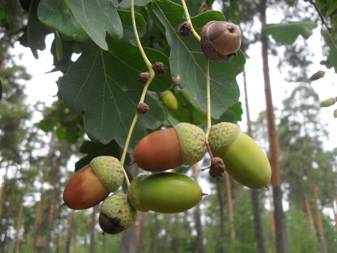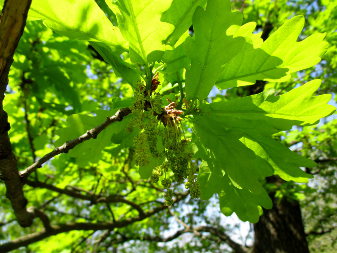


Oak (Quercus), fam. Fagaceae.
Two species grow in the forest and in the city. The first is the common pedunculate (English) oak, Quercus robur; the second is red oak. The latter is the most beautiful in its autumn dress, and its flowering is quite showy, too.
The common oak, evidently, distributes into two sections – the first of them has a trait to spread its leaves much later than the majority of surrounding trees, which partially compensates for long staying of these leaves on the tree during winter.
The preparations from the oak bark are used as antiinflammatory, astringent and wound-healing remedy. The analogous tanning and astringent properties are characteristic for all other parts of the plant. For example, the oak fruits (acorns) are very nutritious, but only those animals can take advantage of them who are not sensitive to bitterness and tartness. Interestingly, the subtropical oak species much more often have edible fruit, and their leaves are mostly evergreen (so, out "winter" oak, which does not hurry to throw off its leaves, reminds them in some way).